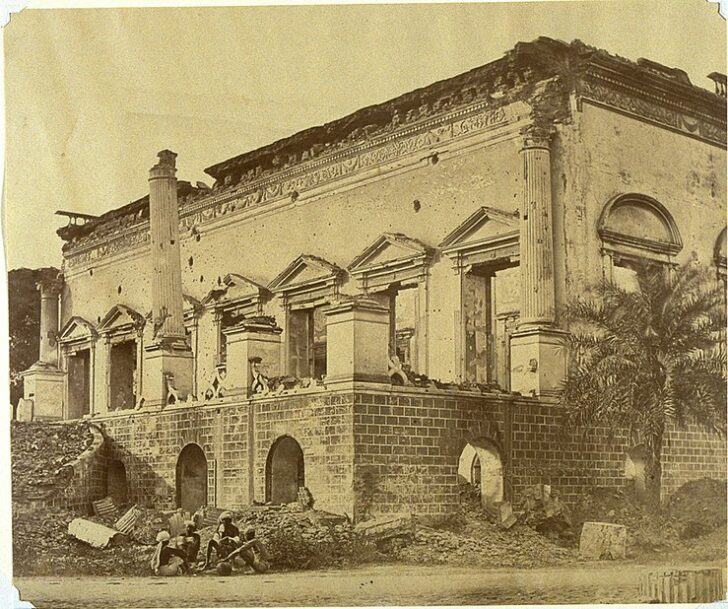Roofless House after the Lucknow Mutiny
Felice Beato

Description
Subject Matter:
This photograph depicts a palatial building that has been devastated by war. Its once elegantly symmetrical façade is riddled and pocked with the scars of battle. Of the columns that used to support the portico over the terrace, a single battered column is left standing, the shattered remains of the others lie strewn before the structure. Seated in the foreground amongst the rubble are a group of four shirtless men wearing turbans. The former house of the Indian ruler, Begum Samru, this building was occupied by the British-run Delhi Bank at the time of its destruction. During the Indian Rebellion of 1857-58, the city of Delhi was taken by Indian sepoys who were revolting against the rule of the British East India Company. This brutal conflict originated from the nearby city of Lucknow and eventually involved much of the subcontinent, with both sides committing atrocities. Felice Beato arrived in Delhi shortly after it was recaptured by British forces, where he documented the devastation of the fighting.
Physical Description:
This photograph depicts a view of a devastated palatial building. Before its shattered portico is a pile of rubble and fragments of columns. Four men in turbans are seated on the ground before the building.
Usage Rights:
If you are interested in using an image for a publication, please visit https://umma.umich.edu/request-image/ for more information and to fill out the online Image Rights and Reproductions Request Form.